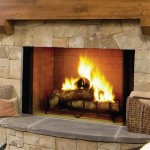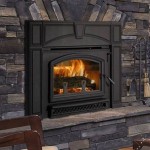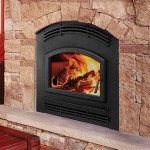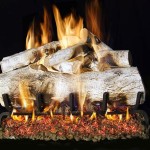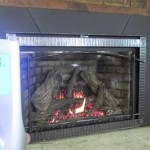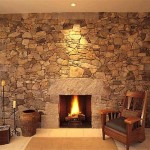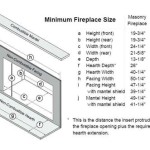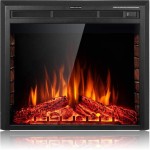Avalon Gas Fireplace Insert Parts: A Comprehensive Guide
Avalon gas fireplace inserts offer an efficient and aesthetically pleasing way to heat a home. These units are complex systems comprised of numerous components working in concert to provide safe and reliable operation. Understanding the various Avalon gas fireplace insert parts, their functions, and potential issues is crucial for proper maintenance, troubleshooting, and repairs. This article provides a detailed examination of the key components found in Avalon gas fireplace inserts.
Key Components of an Avalon Gas Fireplace Insert
A gas fireplace insert, at its core, is designed to safely burn natural gas or propane to generate heat. Several critical components facilitate this process, each with a specific function contributing to the overall operation of the unit. These components can be broadly categorized based on their primary function: gas delivery and control, ignition and flame supervision, combustion and heat exchange, venting, and aesthetics.
Gas Valve: The gas valve is a critical safety component responsible for regulating the flow of gas into the burner. It is typically an electronically controlled valve that opens and closes based on signals from the control module or thermostat. The gas valve ensures that gas is only supplied when the ignition system is active and the unit is operating safely. In Avalon inserts, different gas valve models may be used depending on the unit's BTU output and control system. A faulty gas valve can prevent the fireplace from lighting or cause irregular flame patterns and potentially dangerous gas leaks. Common symptoms of a malfunctioning gas valve include a clicking sound without ignition, a lack of gas flow, or a gas smell emanating from the unit.
Gas Regulator: The gas regulator maintains a consistent gas pressure to the gas valve. Natural gas and propane are supplied at varying pressures from the utility company or propane tank. The regulator lowers and stabilizes this pressure to the specific requirements of the gas valve and burner. A properly functioning regulator ensures consistent flame height and heat output. A faulty regulator can lead to over-pressurization or under-pressurization, resulting in either a dangerously high flame or a weak, sputtering flame. Leakage from the regulator is also a potential hazard.
Burner: The burner is the heart of the gas fireplace insert, where the gas mixes with air and combustion occurs. Avalon inserts utilize various burner designs, often tailored to maximize heat output and create a realistic flame appearance. The burner typically consists of a series of ports or slots where the gas flows and is ignited. Proper burner maintenance involves cleaning the ports to ensure unobstructed gas flow and prevent soot buildup. A clogged burner can result in uneven flame patterns, reduced heat output, and increased carbon monoxide production.
Pilot Assembly: The pilot assembly provides a continuous small flame that ignites the main burner when gas is supplied. This assembly typically includes a pilot burner, a thermocouple or thermopile, and an igniter. The thermocouple or thermopile generates a small electrical current that keeps the gas valve open to the pilot flame. If the pilot flame is extinguished, the thermocouple/thermopile cools, causing the gas valve to close and shutting off the gas supply. The igniter is used to initially light the pilot flame, often employing a spark ignition system or a glow plug. A malfunctioning pilot assembly can prevent the fireplace from staying lit, requiring frequent relighting or resulting in a complete shutdown.
Ignition and Flame Supervision
Safety is paramount in gas-burning appliances. Avalon inserts employ several components to ensure safe ignition and continuous flame supervision, preventing gas leaks and potential explosions. These components constantly monitor the flame and gas flow, automatically shutting down the unit if any anomalies are detected.
Thermocouple/Thermopile: As mentioned earlier, the thermocouple or thermopile is a crucial safety device that monitors the pilot flame. The thermocouple generates a small electrical current when heated by the pilot flame, which keeps the gas valve open to the pilot. The thermopile generates a larger current, capable of powering the gas valve directly in some models. If the pilot flame is extinguished, the thermocouple/thermopile cools, cutting off the gas supply. A faulty thermocouple/thermopile is a common cause of pilot light problems and can be easily replaced. Testing the thermocouple/thermopile with a multimeter can determine its functionality.
Direct Spark Igniter (DSI) or Integrated Control Module (ICM): Many modern Avalon inserts utilize a Direct Spark Igniter (DSI) or Integrated Control Module (ICM) for ignition. The DSI generates a high-voltage spark that directly ignites the main burner. The ICM is a more sophisticated electronic control that manages the entire ignition sequence, including the gas valve, blower fan, and safety interlocks. The ICM monitors the flame using a flame sensor (typically a flame rod) and shuts off the gas supply if the flame is not detected. A faulty DSI or ICM can prevent the fireplace from lighting or cause intermittent operation. Diagnostic codes displayed on the ICM can help identify the specific problem.
Flame Sensor (Flame Rod): The flame sensor, often a flame rod, is used in conjunction with an ICM to monitor the presence of a flame at the burner. The flame rod is positioned near the burner and conducts a small electrical current when it is immersed in the flame. The ICM monitors this current and shuts off the gas supply if the current is interrupted, indicating that the flame has been extinguished. A dirty or corroded flame rod can prevent the ICM from detecting the flame, even if the flame is present. Cleaning the flame rod with fine steel wool or emery cloth can often resolve this issue.
Venting and Combustion Components
Proper venting is essential for the safe and efficient operation of a gas fireplace insert. The venting system removes the products of combustion – carbon dioxide, water vapor, and other gases – from the home. The combustion air supply provides the necessary oxygen for the combustion process.
Vent Pipe: Avalon gas fireplace inserts typically use a direct vent system, which consists of two concentric pipes: one for exhaust and one for intake. The exhaust pipe vents the combustion gases to the outside, while the intake pipe draws fresh air from the outside for combustion. Properly sized and installed vent pipes are crucial for preventing backdrafting and ensuring complete combustion. Blocked or obstructed vent pipes can lead to dangerous carbon monoxide buildup inside the home. Regular inspection of the vent system is vital to ensure it is free from obstructions and leaks. The type of vent pipe (rigid or flexible) also varies based on the model and installation requirements.
Combustion Air Blower (Optional): Some Avalon gas fireplace inserts include a combustion air blower to actively draw in fresh air for combustion. This blower can improve combustion efficiency and reduce the risk of oxygen depletion inside the home. The combustion air blower is typically controlled by the ICM or a separate control module. A malfunctioning combustion air blower can result in incomplete combustion and increased carbon monoxide production. Cleaning or replacing the blower motor may be necessary if it is not functioning properly.
Glass Door: The glass door serves multiple purposes. It provides a barrier to prevent accidental contact with the hot burner and flames, enhances the aesthetic appeal of the fireplace, and helps control the airflow and combustion process. The glass door should be properly sealed to prevent air leaks. Cracked or broken glass doors should be replaced immediately to maintain safety and efficiency. Cleaning the glass door regularly is essential to remove soot and residue, maintaining a clear view of the flames. Specialized fireplace glass cleaners are recommended to avoid damaging the glass.
Blower Fan: The blower fan circulates heated air from the fireplace insert into the room, increasing its heating efficiency. The blower fan is typically located behind the firebox and is controlled by a thermostat or a manual switch. Some models feature variable-speed blowers for customized comfort. A malfunctioning blower fan can significantly reduce the heating effectiveness of the fireplace insert. Common issues include a noisy blower, a lack of airflow, or a completely non-functioning blower. Cleaning the blower blades and lubricating the motor bearings can often resolve these problems. Replacement of the blower motor may be necessary in some cases.
Understanding the various components of an Avalon gas fireplace insert is fundamental for ensuring safe, efficient, and reliable operation. Regular maintenance, including cleaning, inspection, and timely replacement of worn or damaged parts, is crucial for maximizing the lifespan and performance of the unit. Consulting the owner's manual and qualified service technicians is recommended for all maintenance, troubleshooting, and repair procedures.

Avalon 31 Dvi Fireplace Insert Cedar Hearth Mick Gage Plumbing Heating

Avalon 32 Dvs Gas Fireplace Insert Cedar Hearth Mick Gage Plumbing Heating

Avalon 33 Dvi Gas Fireplace Insert Cedar Hearth Mick Gage Plumbing Heating

Avalon Olympic Wood Insert Cedar Hearth Mick Gage Plumbing Heating

Avalon Flush Wood Plus Insert Cedar Hearth Mick Gage Plumbing Heating

Avalon Archives Cedar Hearth Mick Gage Plumbing Heating

Avalon Large Flush Hybrid Fyre Wood Insert Cedar Hearth Mick Gage Plumbing Heating

Radiant Large Gas Insert Available At Creative Energy

Gas Fireplace Inserts Replacement Parts For

Avalon 700 1994 User Manual Gas Avalon700 Woodheatstoves Com
Related Posts

